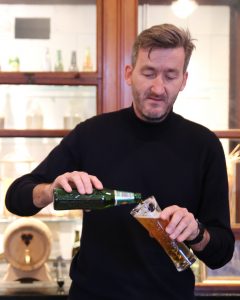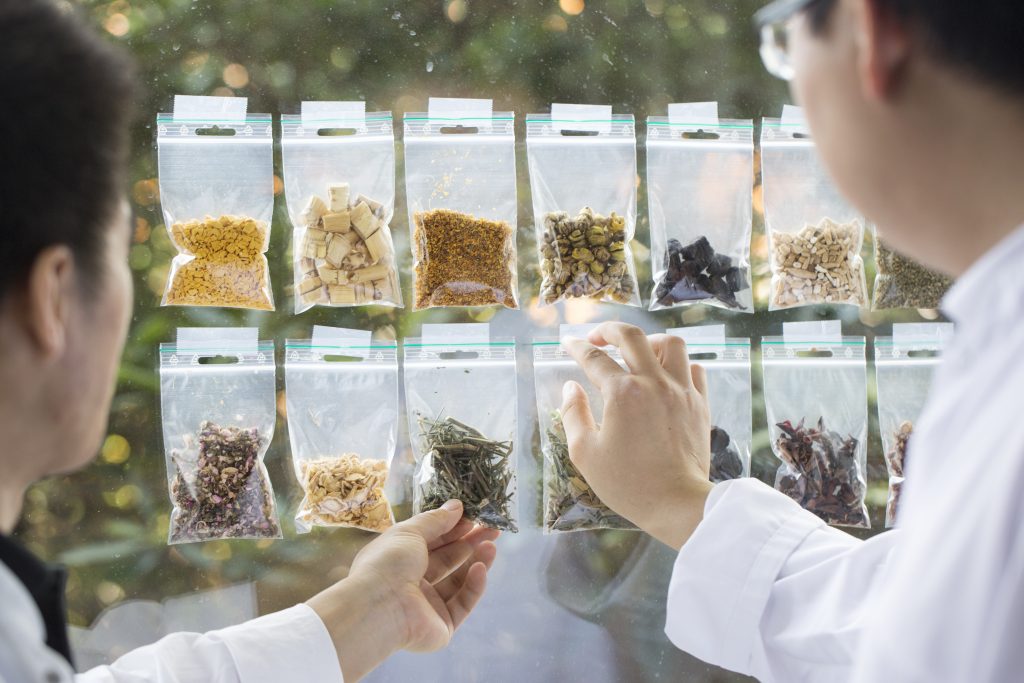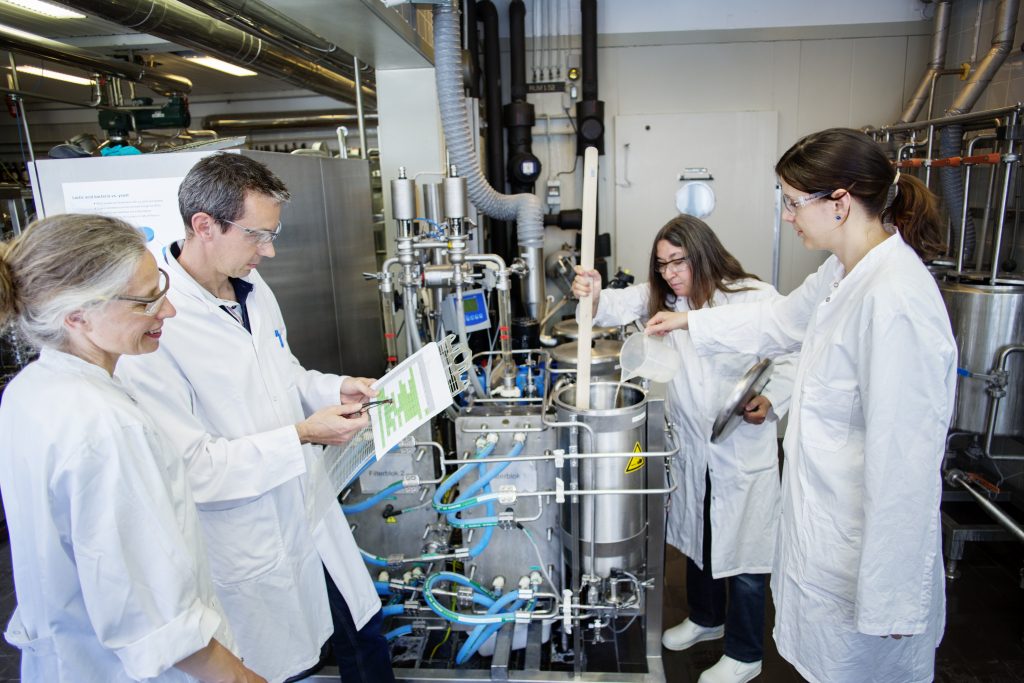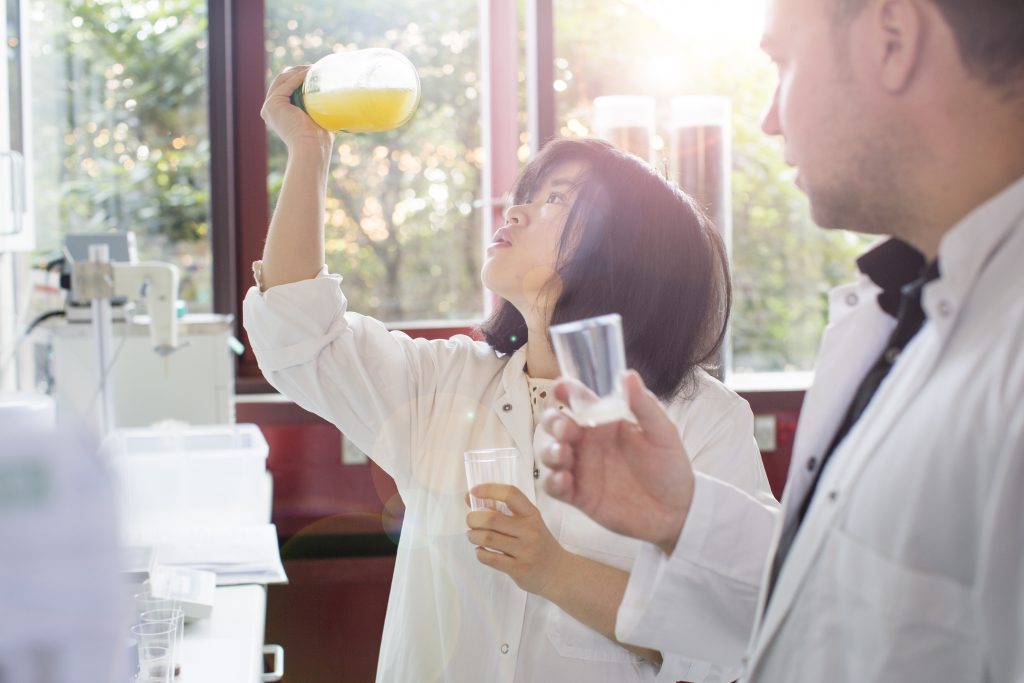Can AI help brewers predict how new beer varieties will taste? Carlsberg says “probably”
In its efforts to brew better beer since it was founded near Copenhagen nearly two centuries ago, Carlsberg has distinguished itself with its commitment to scientific research.
The Danish brewer established a laboratory in 1876 — a new concept at the time — and in 1883 discovered a way to purify yeast that enabled consistent beer production. The company decided to share it with other brewers, and the Carlsberg yeast is used in most of the world’s lagers crafted today. The lab went on to develop the pH scale that has become the standard in determining the acidity of a liquid.
More recently, building on research into how light and sound affect plants, Carlsberg installed big-screen TVs in a greenhouse and played Liverpool FC matches nonstop for the crop of red hops growing there, to create a special brew infused with the soccer team’s colors and the fans’ roaring cheers.
So it’s no wonder that Carlsberg now is leading the way in bringing artificial intelligence (AI) to one of the world’s oldest industries. The Beer Fingerprinting Project will help researchers at Carlsberg, the fourth-largest brewing company in the world with 140 beverage brands in 150 countries, use advanced sensors and analytics to more quickly map out and predict flavors. And it’s all aided by a move to the cloud to help speed along the company’s “Sail’22” growth strategy and better contend with increased competitive pressure.
“From our founder on, Carlsberg has had this history of innovation, of disrupting the brewing industry and constantly looking for ways to do things better,” says Sarah Haywood, chief technology officer for Carlsberg Group. “So this digital transformation ties in nicely with that.”
Known as “Dr. Beer,” Jochen Förster is the director and professor of yeast and fermentation for Carlsberg Research Laboratory, whose principal task, as laid out by founder J.C. Jacobsen, is to develop as complete a scientific basis as possible for malting, brewing and fermenting operations.

“It may sound nice to have to taste a lot of beers every day, but we create hundreds of small microliter brews and beers, in such small volume that they’re not really testable,” Förster says. “So we realized that if we had sensors that could tell us at the outset if the yeast is really going to be usable later in large-scale beer production — and that could recognize the chemicals and flavor compounds to predict what a beer will taste like — that would really help our research a lot.”
The lab began working with Aarhus University, Denmark’s leading research institution, to develop sensors; with the Technical University of Denmark, north of Copenhagen, to figure out how to implement them in different fermentation scenarios; and with Microsoft to analyze the signals from the sensors using AI solutions, including machine learning algorithms, to measure the flavors and aromas created by yeast and other ingredients.
The three-year project began about six months ago, so it’s too early to give detailed results. But the sensors can already differentiate between various pilsners and lagers, and researchers are now fine-tuning the system and developing software that will make it easier for technicians who might not be familiar with AI to use it to amplify their work, Förster says.
The goal is to map a flavor fingerprint for each sample and reduce the time it takes to research taste combinations and processes by up to a third, to help the company get more distinct beers to market faster.

When Förster began working with yeast 20 years ago, an international consortium of dozens of researchers had just deciphered and published the yeast genome, after studying it together for years. Now, he can get back the same data on any given strain within a week, characterized in much greater detail. That speed has created a flood of data, setting up a situation where AI can really shine, he says, by rapidly analyzing data sets and showing patterns.
Technological advances in communicating are helping Förster’s team keep up in practical ways, too. The Beer Fingerprinting Project is “a very Scandinavian project,” being worked on in different cities throughout Denmark and Sweden, Förster says. The distance between them makes it difficult to meet in-person regularly, but tools such as Teams, Sharepoint and Skype have sped up the process of collective creativity, he says.

The Danish brewing company has just gone through “a massive re-engineering and reimagining” of its infrastructure platform to boost its performance and, above all, its agility and speed, Haywood says.
By migrating its 500 servers to Microsoft Azure earlier this year and adopting Office 365 and Windows 10, among other new tech solutions from Microsoft partners, Carlsberg not only has the structure and scale to manage its core platforms with rigor and discipline, she says, but employees are able to work in a more collaborative environment and micro-test ideas to move more quickly in bringing them to market. Haywood and Förster will be presenting about their experience at this week’s Inspire conference, an annual event for Microsoft partners.
“Essentially, we’re leveraging this digital landscape to enable new ways to connect with our employees, customers and consumers,” Haywood says, “and pace is critical here in terms of how quickly we can access those opportunities and stay in front of our competition.”
It’s an important foundation for the company’s seven-year Sail’22 growth strategy launched in 2016, helping Carlsberg optimize its infrastructure while speeding up development and boosting flexibility.

The cloud is also the platform for the “connected bar” concept Carlsberg is testing with 30 pilot pubs. The prototype uses the “Internet of Things” (IoT) to provide information to bar owners that helps them better manage their stock of kegs, the temperature of the beer and more, to improve their profitability as well as their patrons’ experience.
The digital evolution is sure to bring cause for a bit more certainty and swagger to a company whose tagline since 1973 has been that it’s “probably the best beer in the world.” But don’t expect to see a public change in the modest Danish company’s tone. Carlsberg put together a TEDx talk last year sharing the philosophy passed down by founder Jacobsen, one it still embraces as its way of doing business: Avoid the pitfalls of dogmatic beliefs by answering every question with “probably.”
Still, if you ask “Dr. Beer” Förster whether Carlsberg really might be able to brew better beer through advances in technology, you’ll get a slightly different reply: “We already are.”
Top photo: Carlsberg researchers create hundreds of small microliter brews and beers every day as they test new ingredients. All images courtesy of Carlsberg.








